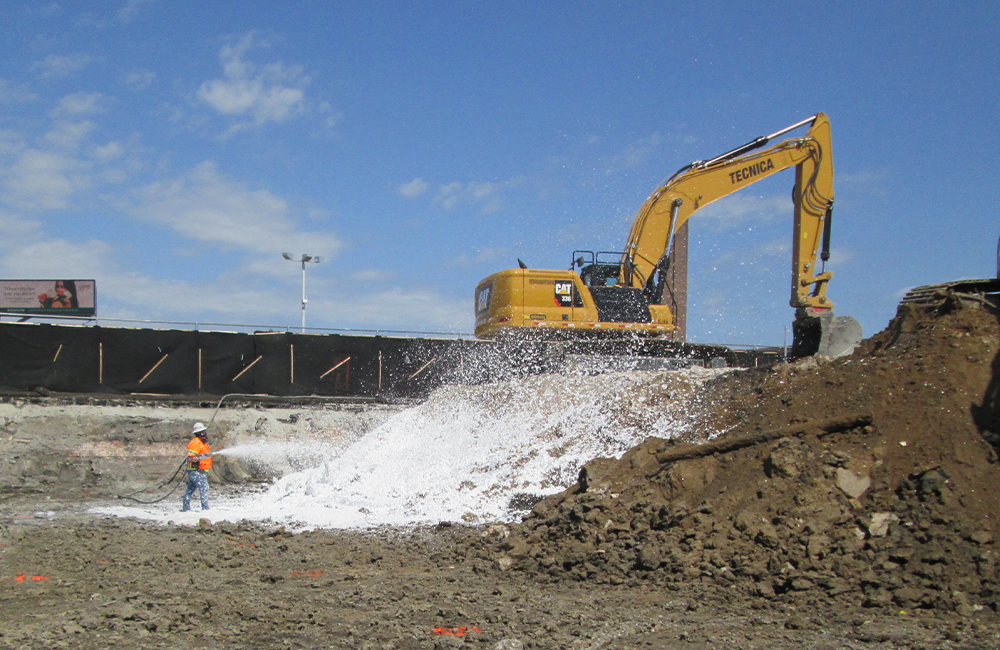The site housed a warehouse for various materials and equipment, sharing the space with a maintenance shop and fleet vehicles. The client’s new facility — to be constructed on remediated land — will serve as the hub from which many crews will report out of to deliver utility services to residents. Keeping operations running at the old warehouse until the new facility is functional meant the project would need to be managed strategically.
This initiative required coordination of several business units, including the environmental remediation department, to perform the decommissioning and demolition activities and voluntary cleanup efforts to meet U.S. Environmental Protection Agency regulations. The remediation approach used at the site was dig and haul. This was deemed the most cost‑effective approach and one that would facilitate a phased approach to keep operations streamlined.
Read The Project Profile
The site housed a warehouse for various materials and equipment, sharing the space with a maintenance shop and fleet vehicles. The client’s new facility — to be constructed on remediated land — will serve as the hub from which many crews will report out of to deliver utility services to residents. Keeping operations running at the old warehouse until the new facility is functional meant the project would need to be managed strategically.
This initiative required coordination of several business units, including the environmental remediation department, to perform the decommissioning and demolition activities and voluntary cleanup efforts to meet U.S. Environmental Protection Agency regulations. The remediation approach used at the site was dig and haul. This was deemed the most cost‑effective approach and one that would facilitate a phased approach to keep operations streamlined.
Our team served as the construction manager for the demolition, remediation and support activities spanning across this three-year project. The demolition and removal action was phased in scope and performed in concert with the construction of the new facility. The site remediation was also strategically planned to keep operations going throughout the process, streamlining the construction of the new facility at the site.
The first phase of remediation was targeting the new building location. Once that removal action was completed, that portion of the site was prepared for the facility construction. The next phase was dedicated to relocating operations to that portion of the property. The team then focused on the remaining acres of the site, preparing the land to be sold. With weekly meetings, our team kept all stakeholders aligned to provide for smooth transitions between phases.
Our demolition and decommissioning team performed regulated materials assessments on three areas, which included two warehouses, a garage and an office area. We also managed the decommissioning of buildings that included clearing, asbestos abatement, universal and regulated waste removal, and utility deenergizing and disconnections. Remediation superintendents managed the excavation, backfill, impacted contact water and treatment, earth retention system installation, temporary electrical installation and general site setup.
With cost- and resource-loaded schedules developed, our team has been able to keep the project on time and under budget. The client has also been able to keep operations running smoothly, remediate the former MGP site and prepare to sell its additional acreage.


